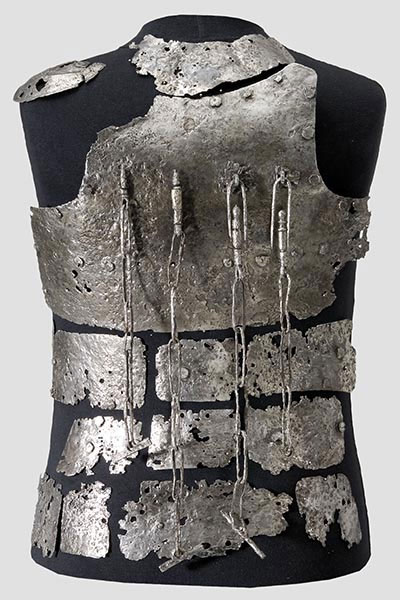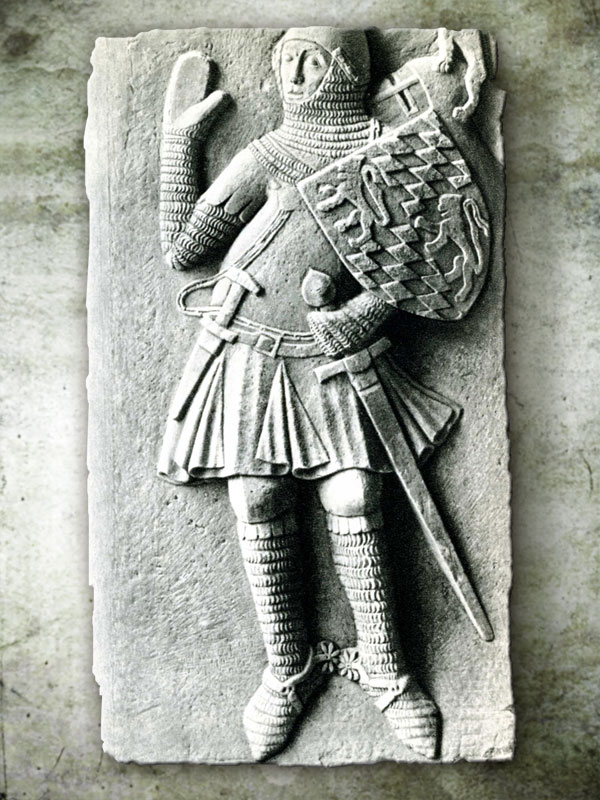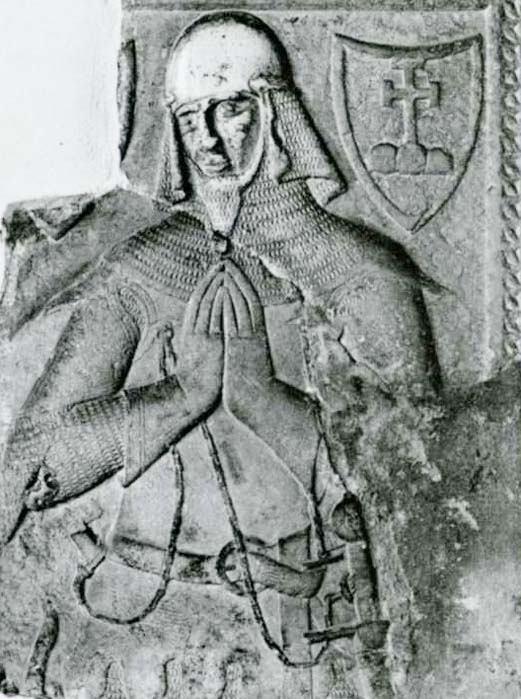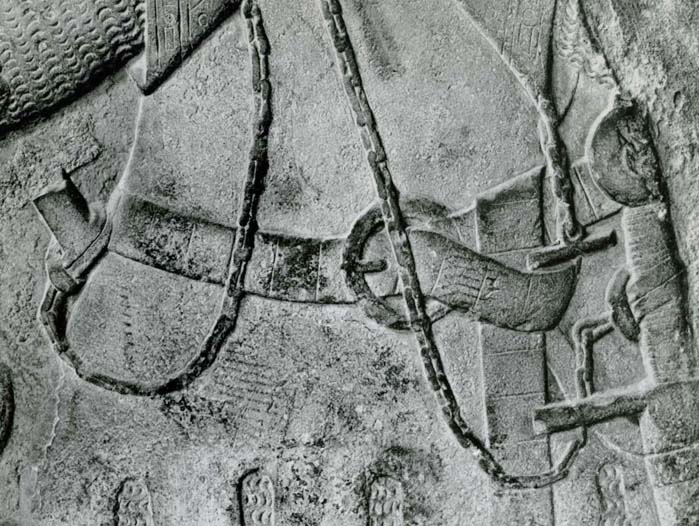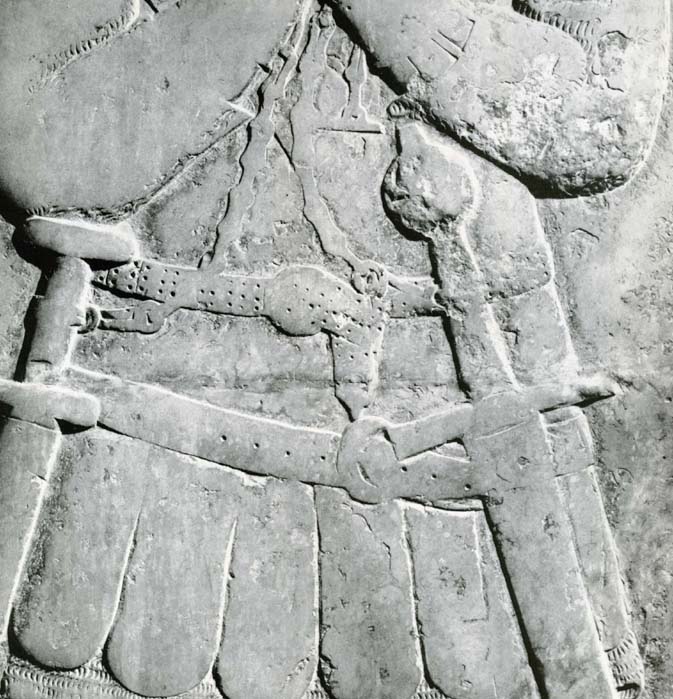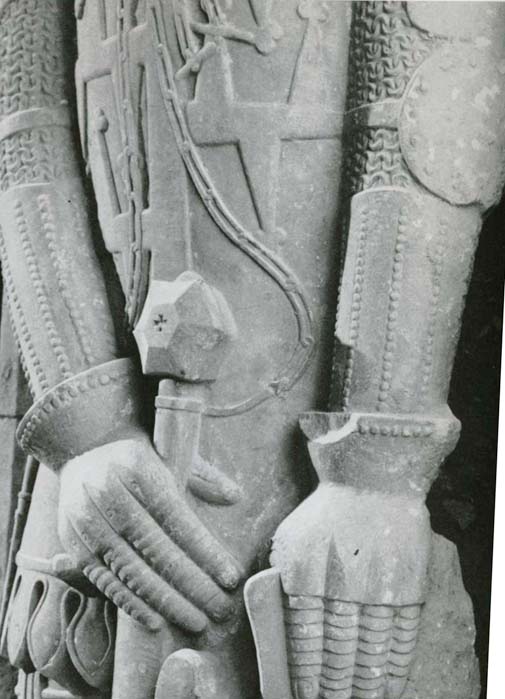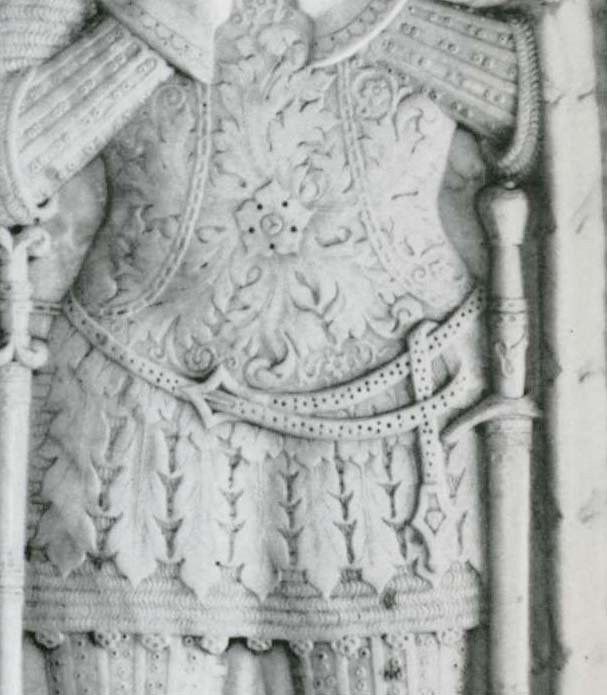Posts: 50 Location: Hungary/France
Wed 16 Jun, 2010 9:56 am
Greetings!
These chains on the coats of plates always confused me. But your comments opened my eyes! Indeed, these chains seems to be in connection with the arms and helmets of the knights. There are some examples of these kind of fittings in the book: Armour from the battle of Wisby 1361, written by Bengt Thordeman. The surprising is that almost all of them came from the present territory of Germany. If any of you met with similar construction, please, correct my missleading idea, but for me, this style, construction seems to be a German invention.
Actually I might come up with a counter opinion in this reply... :D
In the Chronica picta (Hungarian manuscript from around 1360) multiple warriors are being presented wearing something strange, suspender looking leather (?) strap over their tabard (or coat of plates).
This might have served the same function?
And just a nother question: Jared, where did they find the armour, presented in your attachment? It is a really interesting and well preserved piece, it would be good to know a bit more about it.
Best wishes!
John
 Attachment: 42.07 KB
Attachment: 42.07 KB
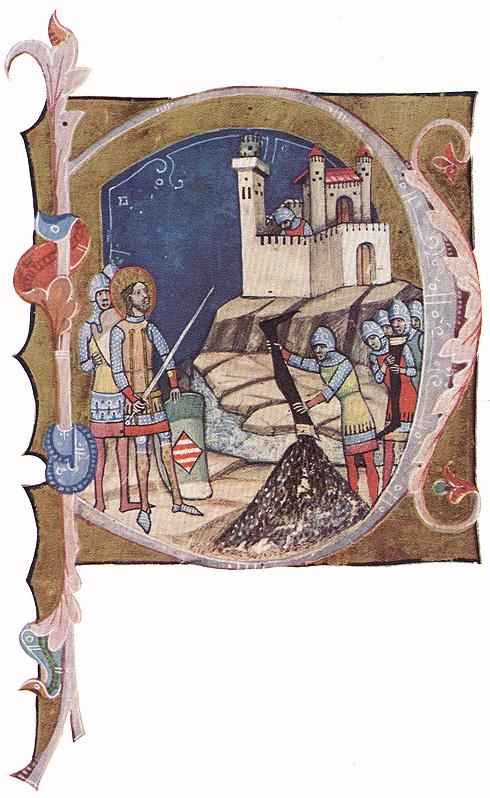
Siege of Kraków from the Chronica picta
